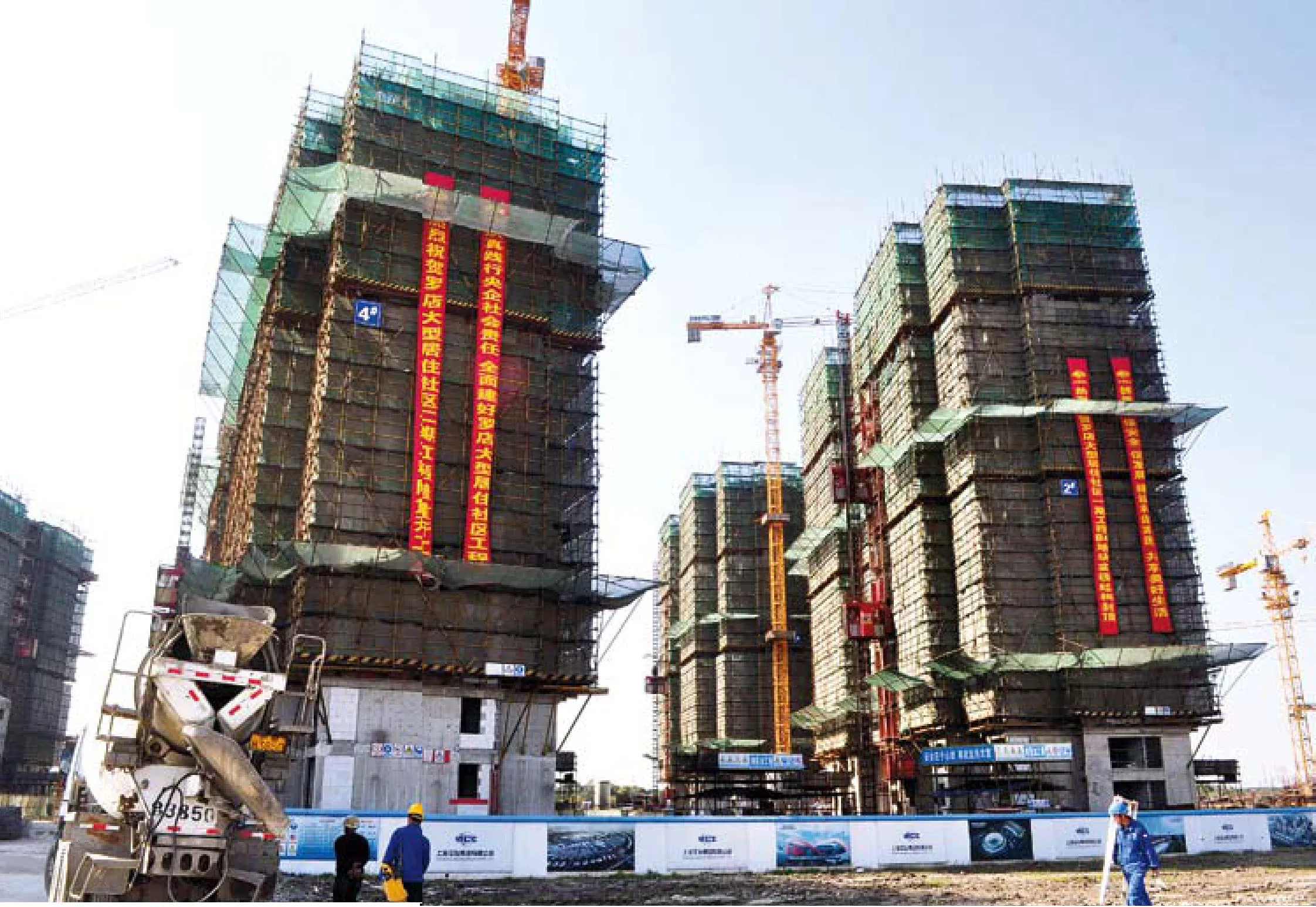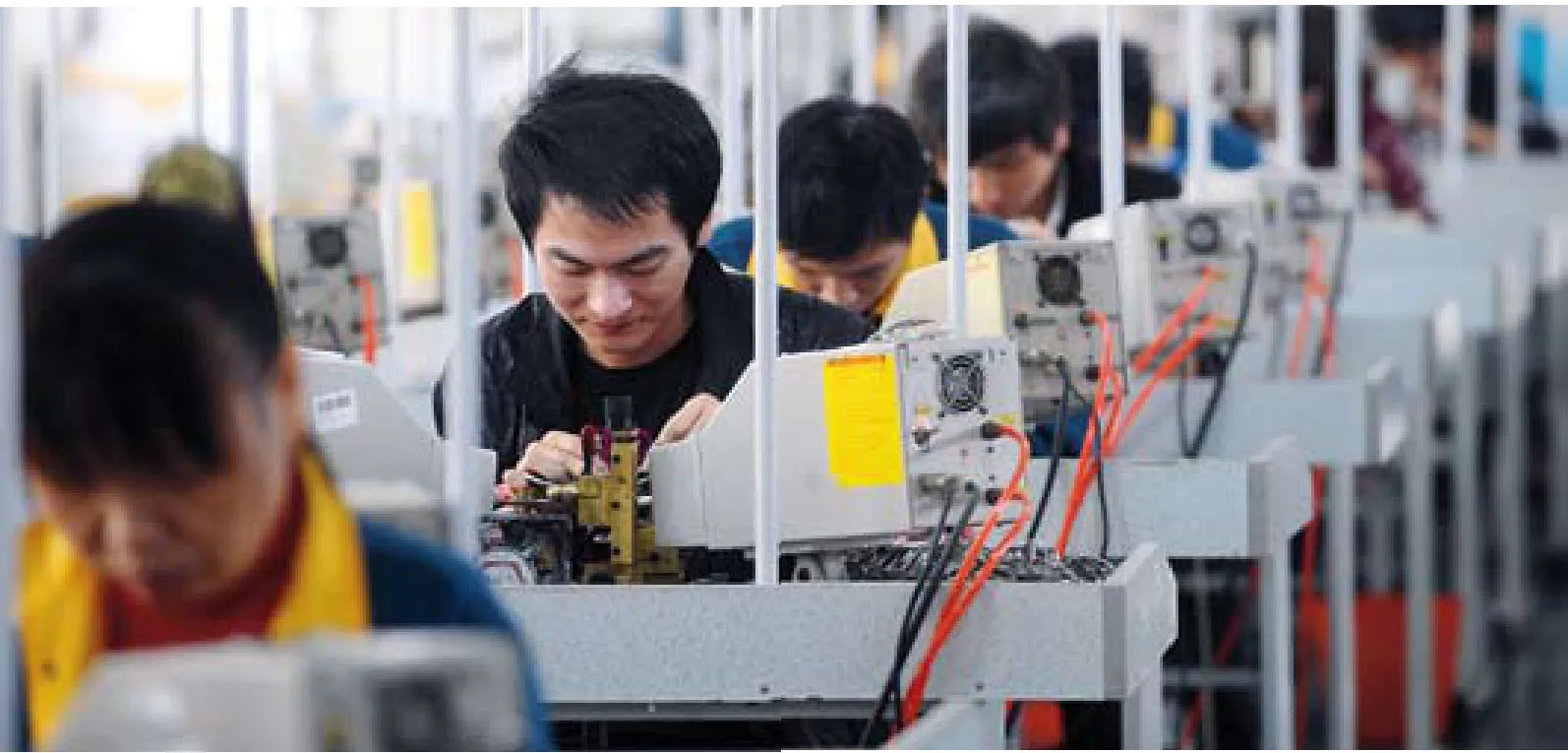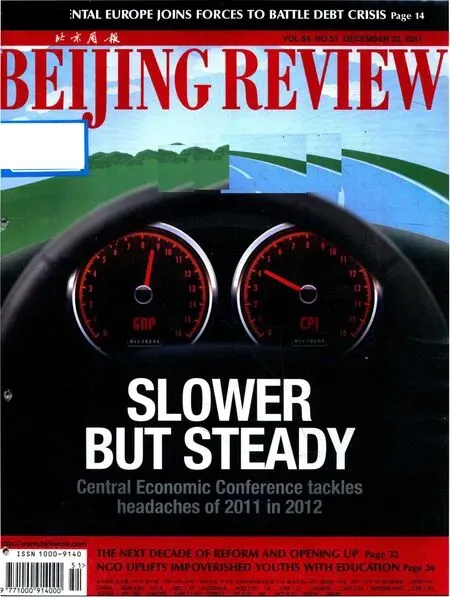THE PLAN FOR 2012
2011-10-14ByHUYUE
By HU YUE
THE PLAN FOR 2012
By HU YUE
China aims to walk a fine line between maintaining stable growth, rebalancing the economy and combating inflation next year
For the Chinese economy, 2012 will be a year filled with uncertainties. With the Western world struggling with a fragile recovery, China’s export growth has taken a hit, with expectations of even worse to come.
Domestically, concerns abounded that the country has gone too far with its monetary tightening, which may in turn sap the country’s growth momentum. This dark prospect has placed an onus on policymakers to fnetune their macroeconomic policies and steer the economy on a steady course.
For 2012, China will adhere to stable and consistent policies and retain its prudent monetary policy and proactive fscal policy—the macroeconomic outline was mapped out at the annual Central Economic Work Conference (CEWC), China’s top-level economic meeting, held on December 12-14 in Beijing.
At last year’s CEWC, China pledged to take a prudent monetary stance for 2011, marking a switch from the moderately loose policy adopted to counter the 2008 fnancial crisis.
Growth woes
“The world economy is confronted with serious headwinds, with global trade weakening and the financial markets fluctuating,”said the CEWC statement.
“Meanwhile, domestic downside risks are looming for the economy, and some enterprises are facing difficulties in operation,” it said.“The infation pressures remain and the fnancial sector is hidden with potential dangers.”
“That means China must stay alert over the uncertainties and prepare countermeasures,” it added.
The Chinese economy is feeling the chill of lackluster exports since the global economy remains on a slippery slope in large part due to the two-year sovereign debt crisis. The credit rating agency Standard & Poor’s has recently put 15 euro zone nations on “credit watch” due to deepening economic and political turmoil in the region.
“If the global recession returns, China’s exports may nose-dive 10-12 percent next year, taking around 2.25 percentage points off GDP growth, “ said the Swiss investment bank UBS in a recent report. “In addition, the ripple effect will also filter through investments and consumptions.”
UBS trimmed its forecast for China’s economic growth in 2011 to 9 percent from a previous 9.3 percent to refect weaker prospects in Western economies.
Domestically, signs are emerging that the once-robust growth engine is stalling as policymakers twisted hard on credit screws to quell infation. Bearing the brunt of the heavy economic blows were smaller private frms that have found it harder to secure bank loans than state-owned enterprises. Reports have been fooding media outlets that east China’s Zhejiang Province, a cradle of the private economy, is experiencing massive factory closures and bankrupt entrepreneurs are disappearing to avoid huge debts.
The purchasing managers index (PMI), a barometer of manufacturing activities, slumped to 49 percent in November. This was the frst time that the index has dropped below the boom-bust line of 50 percent in 33 months.“Judging from the PMI figures, China is experiencing its most difficult period since the global financial crisis in 2008 and the situation demands the Chinese Government loosens its monetary policies,” said Liu Ligang, a researcher from ANZ Greater China.

YAN DAMING
The China Entrepreneurs Survey System, a research institution under the State Council, recently conducted a survey of more than 4,000 companies all over the nation, and 48.3 percent of the respondents said they have come under intense financial pressures because of the tightening measures.
The People’s Bank of China, the central bank, has ordered interest rate hikes three times this year and increased the reserve requirement ratio six times.

WANG DINGCHANG
The quickly cooling real estate market also became a significant drag on growth. Home buyers have stayed on the sidelines, draining life out of the once-exuberant market and dealing a blow to a series of related sectors like furniture and appliances.
“The contracting demand is squeezing profitability out of affected industries and dampening business confdence,” said Peng Wensheng, chief economist with the China International Capital Corp.
Zheng Xinli, Vice Chairman of the China Center for International Economic Exchanges, said the CEWC has sent out a message that the country will prioritize ensuring stable growth next year.
“Policymakers should coordinate monetary and fscal policies to beneft economic rebalancing, and lay a solid groundwork for steady growth in the future,” he added.
Fine-tuning policies
To ensure economic stability, the Central Government vowed to make policies more“targeted, fexible and foresighted.”
“The goal is to strike a balance between maintaining growth, deepening economic rebalancing and managing infation expectations,” said the CEWC statement.
“Monetary policies will be fine-tuned according to actual situations and fscal policies will focus on structural tax reduction and inputs for improvements of people’s livelihoods,” it added.
China has already taken some selective steps, geared to small business, to prevent a deeper downturn.
The central bank has required commercial banks to bump up lending to cash-starved smaller businesses and the weak agriculture sector. In the first three quarters, small and medium-sized enterprises received 2.26 trillion yuan ($357.03 billion) in new loans, accounting for 68.4 percent of the total.
A more substantial move came on November 30 when the central bank announced to decrease the ratio of deposits that banks must set aside in reserve by 0.5 percentage points for the frst time in three years. This was widely seen as a signal for China’s policy shift toward targeted easing as infation jitters give way to concerns over slowing growth.
“The cut is within expectations given liquidity shortages in the banking system,” said Lu Ting, a Hong Kong-based economist with Bank of America Merrill Lynch. “It is part of ongoing fne-tuning, which has been taking place since early October.”
“Inflation is moderating in the country, leaving room for China to step up selective easing measures and shore up the weakening economy,” he said. Lu expected China to cut the ratio another three times before the end of 2012.
Qu Hongbin, chief China economist with the HSBC, also believes that more reserve ratio cuts may follow, but interest rates may remain unchanged until infation falls below 3 percent.
“Full-fledged monetary easing is not needed because China’s exposure to external demand is less than it was during the 2008-09 downturn, and its dependence on exports is much lower,” Qu said.
“The underlying strength of the industrial sector remains strong,” he said.“Policymakers need to become more fexible and closely watch the unfolding European debt crisis.”
Ba Shusong, Deputy Director of the Research Institute of Finance at the Development Research Center of the State Council, also pointed out that it is inappropriate to adopt more aggressive easing policies for fear of reigniting infation.
“China must learn lessons from the massive credit expansion two years ago that sowed the seeds of acute infation,” he said.
“There is usually a time lag before the monetary adjustments gain traction, so a more direct solution is to take proactive
fiscal policies to avoid an economic hard landing,” said Liu Tiejun, a senior analyst with the Shanghai-based Haitong Securities Co. Ltd.
Xia Bin, a member of the Monetary Policy Committee of the People’s Bank of China and a researcher with the Development Research Center of the State Council, believes the key to stabilizing growth lies in the fscal front.
“China is positioned to hand out more fscal stimulus such as tax reductions for smaller businesses and strategic emerging industries, as well as greater efforts to improve the social safety net,” he added.
Qu said fscal policies should play a bigger role in stimulating the economy without sparking inflation. “The country needs to put more investments in affordable housing projects, and improvement of medical and education services,” he added.
Rebalancing commitment
As China embarks on a more sustainable path of growth, economic rebalancing and structural adjustment will take center stage.
China will boost domestic demand, encourage consumption, expand the proportion of people in middle-income groups, and foster the strategic emerging industries including information technology and new materials, according to the statement. Moreover, efforts will be made to protect the environment, as well as enhance energy conservation and emission reductions.
“The slowdown provided a powerful catalyst for the country to accelerate economic rebalancing and wean off reliance on external demands,” said Fan Jianping, chief economist with the State Information Center.
Instead of pumping massive lending and investments like it did in 2009, China should attach greater importance to seeking more sustainable growth and improving people’s livelihood, he added.
“For example, the government should strengthen anti-monopoly efforts and foster private investments by opening up more state-controlled sectors,” said Fan.
Steps to transform the growth pattern are already underway. The country’s 12th Five-Year Plan (2011-15) vowed vigorous efforts to propel consumption, develop the service sector and eliminate polluting and energyguzzling businesses.
The country in September raised the cutoff point for personal income tax to 3,500 yuan ($553) from 2,000 yuan ($316), a move expected to bolster wage growth and fuel consumption.
Credit Suisse expected China’s share of global consumption to increase from 5.2 percent at $1.72 trillion in 2009 to 23.1 percent at $15.94 trillion in 2020, overtaking the United States as the largest consumer market in the world.
In another move, the Ministry of Commerce recently released a five-year blueprint for the service trade sector, pledging generous incentives including favorable tax policies and fnancial assistance.
Industrial overcapacity is also abating. Earlier this year, the country released plans to eliminate 31.22 million tons of outdated ironmaking capacities and 31.22 million tons of cement capacities. By the end of September, the country had fulfilled 90 percent of the target, said Miao Wei, Minister of Industry and Information Technology, at a press conference in November.
Meanwhile, energy-efficient and environment-friendly industries are getting the chance to shine. As it attempts to diversify away from fossil fuel, China has made headway in developing wind and solar energies.
“Economic rebalancing should be a long-term task for China, whatever external environment it faces,” said Wang Tao, chief China economist with the UBS.
“The key is to deepen market-oriented reforms and liberalize pricing of several elementary factors such as power, land and interest rates,” she said. “It is necessary to allow the markets to play a leading role in promoting rebalancing.”
Stephen Roach, Non-Executive Chairman of Morgan Stanley Asia, said China should focus on the creation of service jobs; boost income growth by very aggressive urbanization—moving tens of millions of people each year from the countryside to the cities; and improve the social safety net, especially by investing in social security, private pensions and medical insurance.
Justin Lin Yifu, chief economist and Senior Vice President of the World Bank, said China has the potential to achieve another 20 years of 8-percent growth.
“However, China faces challenges in achieving this objective due to triple imbalances, including relatively weak consumption, income inequality and environment damages,” he said.
“To address those concerns, it is imperative for China to remove distortions in the finance, natural resources and services sectors that currently leave too much power and borrowing capacity in the hands of big corporations and rich citizens and very limited access to credit for low- and middle-income Chinese,” he said.
Specifcally, he said these changes should include propelling development of small and local fnancial institutions, and encouraging competition in telecommunications, power and fnancial sectors.
Fears of inflation
Inflation remains a headache for the economy, though its acuteness is already moderating.
“Upward pressures on consumer prices remain, and we will continue comprehensive measures to prevent infation from rebounding,” said the CEWC statement.
The consumer price index (CPI), a barometer of inflation, grew 4.2 percent in November from a year ago, 1.3 percentage points down from October, said the National Bureau of Statistics. This was the fourth straight month of declines, after peaking at 6.5 percent in July.
The biggest driver of the CPI was still food prices, which leapt 8.8 percent in November over the same period last year. Pork prices, in particular, jumped 26.5 percent.

LI JIAN
The producer price index (PPI), an effective gauge of inflation at the wholesale level, edged up slightly by 2.7 percent in November, 2.3 percentage points lower than the previous month.
Shen Jianguang, Greater China chief economist at Mizuho Securities Asia Ltd., said three major factors combined to weigh down the CPI: a tightening monetary environment, falling international commodities prices and increased domestic supplies of agricultural products.
The policymakers have been pushing all the buttons to tame infation. The government has distributed subsidies to farmers in wheatgrowing areas, enhanced price supervision and fought hard against speculation.
Wang Jian, Secretary General of the China Society of Macroeconomics under the National Development and Reform Commission, said China’s infation jitters are easing, but have not disappeared.
“The downward cycle of consumer prices is yet to be established,” he said. “The future trend will largely depend on international commodities prices and whether China can reap a bumper harvest of grain next year.”
Wang expected the infation rate to stay elevated near 5 percent in 2012 due to persistent pressures from labor and land costs infation.
Zhang Yongjun, a researcher with the China Center for International Economic Exchanges, also struck a note of caution.
“Lagging effects of the lending spree two years ago are tapering off, paving the way for infation to cool off,” he said. “But China’s inflation is likely to come roaring back if the United States kick-starts a third round of quantitative easing.”
“The challenge for policymakers is to enact measures that boost domestic demand and to loosen credit controls somewhat without stoking infation and property price bubbles,”said Jing Ulrich, JP Morgan’s chairwoman for global markets.

YU FANGPING
